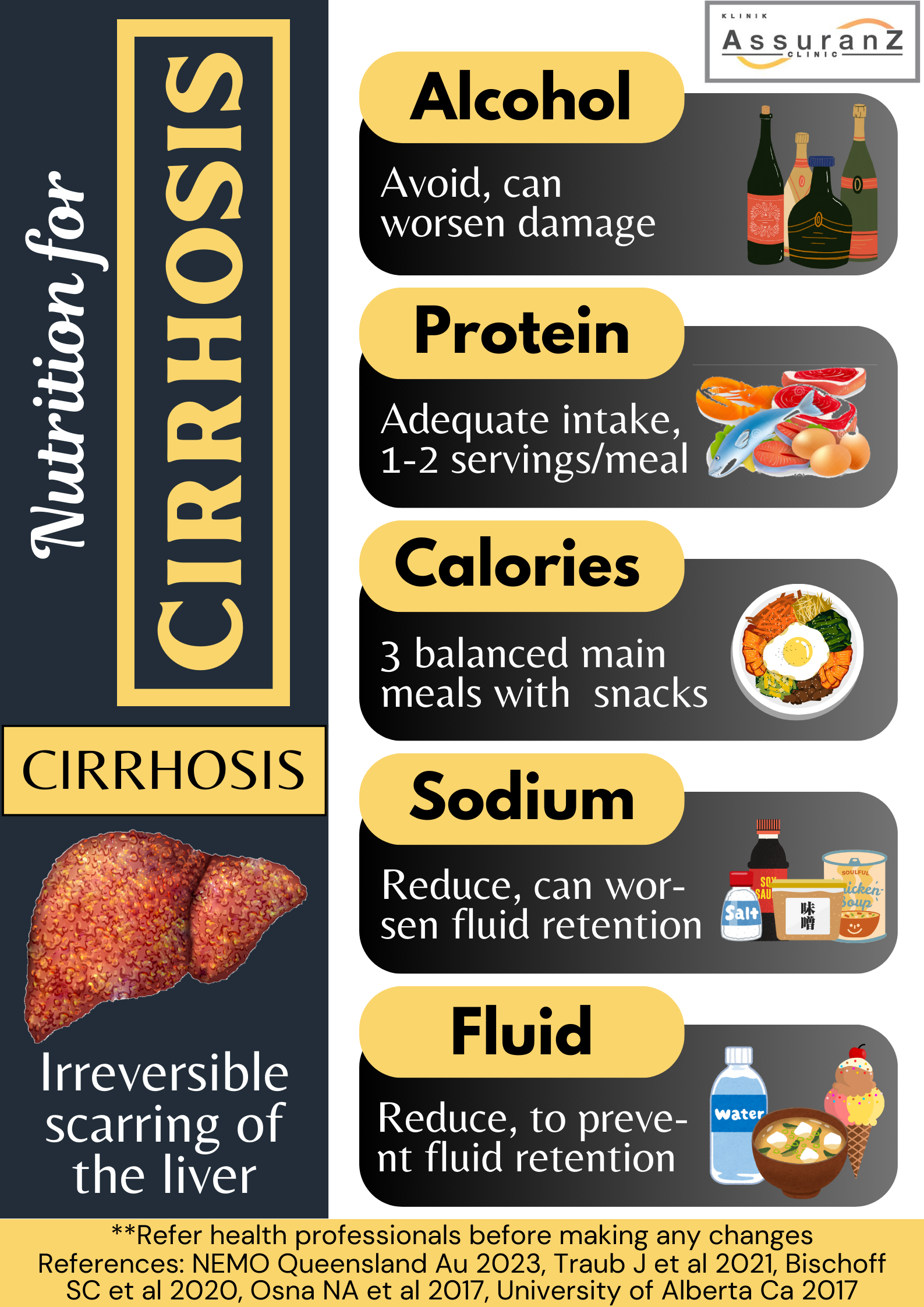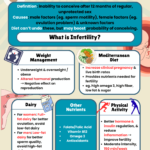Liver is an important organ with many functions, namely storage and metabolism of fat-soluble vitamins, detoxification, blood cell breakdown, and supports digestion, metabolism, and immune system. Liver function can be affected by infection such as hepatitis A and B viruses. An unhealthy lifestyle such as excessive alcohol consumption and sedentary lifestyle, and medical conditions such as obesity, diabetes and high triglyceride level can also increase the risk of liver becoming damaged and ceasing to function. The disease progression in non-viral liver disease (non-alcoholic fatty liver disease – NAFLD and alcoholic fatty liver disease – AFLD) happens in stages. The first stage is steatosis or fatty liver, where fat is deposited in the liver. Excessive fat leads to steatohepatitis, which is inflammation of the liver. The inflammation then can damage the liver tissues, leading to scarring or fibrosis. In these stages, the damage is still reversible. Cirrhosis, or irreversible scarring happens as even more liver tissues are damaged. As cirrhosis progresses, the liver can no longer function leading to liver failure.
肝脏是一个具有多种功能的重要器官,即储存和代谢脂溶性维生素、排毒、分解血细胞、并帮助消化、新陈代谢和免疫系统。肝脏功能会受到甲型肝炎和乙型肝炎病毒感染的影响。不健康的生活方式如过量的饮酒和久坐不动、身体状况如肥胖、糖尿病和高甘油三酯水平也会增加肝脏受损和停止功能的风险。非病毒性肝病(非酒精性脂肪性肝病-NAFLD和酒精性脂肪性肝病-AFLD)的病情是分阶段发展的。第一阶段是脂肪变性或脂肪肝,脂肪沉积在肝脏内。过多的脂肪会导致脂肪性肝炎,即肝脏炎症。炎症会损害肝组织,导致疤痕或纤维化。在这些阶段,损害过程仍然可逆转的。随着越来越多的肝组织受损,就会出现肝硬化或不可逆转的瘢痕。随着肝硬化的进展,肝脏将无法再发挥正常功能,从而导致肝功能衰竭。
Liver cirrhosis can be divided into compensated and decompensated liver cirrhosis. In compensated liver cirrhosis, the liver remains functioning albeit inadequately, thus symptoms of the disease are mild to none. Symptoms may include lethargy, nausea, appetite loss, weight, and muscle loss. In decompensated liver cirrhosis, the liver can no longer does its job, leading to at least one complication, that are fluid accumulation in the abdomen (ascites) or other parts of the body (edema), jaundice, variceal hemorrhage (bleeding of the enlarged blood vessels, typically in the esophagus), and hepatic encephalopathy. Aside from medical treatment, dietary intervention is crucial in delaying the progress of cirrhosis. However, before any changes are made to your dietary intake, seek healthcare professional advice. Here are some common dietary managements of liver cirrhosis.
肝硬化可以分为代偿期肝硬化和失代偿期肝硬化。在代偿期肝硬化中,肝脏仍然可以发挥其功能,尽管它的功能不全,因此它的疾病症状较轻或没有症状。它的症状可能包括嗜睡、恶心、食欲不振、体重下降及肌肉萎缩。在失代偿期肝硬化中,肝脏不再能发挥其功能,导致至少一种并发症,即腹部(腹水)或身体其他部位积液(水肿)、黄疸、静脉曲张出血(扩张血管出血,通常在食道中)和肝性脑病。除了药物治疗,饮食对于延缓肝硬化的进展也至关重要。然而,在对饮食摄入做出任何改变之前,请先寻求保健专业人士的建议。以下是一些常见的肝硬化饮食管理。
- Alcohol abstinence – Liver is the primary site of ethanol metabolism, thus abstinence from alcohol can reduce the burden of the liver and improves survival of patients with cirrhosis.
戒酒–肝脏是乙醇代谢的主要部位,因此戒酒可以减轻肝脏负担并提高肝硬化患者的生存率。
- Adequate energy – Cirrhosis, primarily decompensated cirrhosis can cause malnutrition due to reduced dietary intake as a result of appetite loss, fluid retention in the abdomen (ascites) leading to early satiety, salt restriction, micronutrient deficiency leading to smell and taste changes, and impaired gastric motility and relaxation due to portal hypertension. Tips to increase energy intake includes eating small but frequent meals about 5 to 6 times a day; set mealtimes and eat even if you are not hungry during the mealtime; consume favorite food any time of the day; incorporate high energy and protein food in meals and snacks such as butter, oil, milk powder, cheese, creamy dressings and seeds; drinking after or in between meals instead of before or during meals; and consume high protein and energy drink such as oral nutrition supplement, preferably energy and protein dense, being mindful of fluid restriction allowance, if there is no appetite to eat. Making mealtimes more meaningful by eating together with family or while watching movies et cetera, and food presentation can also help to increase appetite.
充足的能量–肝硬化,主要是失代偿期肝硬化,会由于食欲不振而导致饮食摄入量减少,腹部液体滞留(腹水)导致早饱、盐限制、微量营养素缺乏改变嗅觉和味觉,以及门脉高压导致胃蠕动和舒张功能受损,从而造成营养不良。增加能量摄入的秘诀包括:每日少量多餐,大约5至6餐;设定用餐时间,即使在用餐时不饿也要进食;在一天里的任何时候吃喜欢的食物;在正餐和零食中加入高能量和高蛋白质的食物,如黄油、奶粉、奶酪、奶油酱和种子;在饭后或两餐之间喝水,而不是在饭前或饭中喝水;如果没有食欲,就饮用高蛋白和高能量饮料,如口服营养补充剂,最好是能量和蛋白质含量高的饮料,并注意限制液体摄入量。通过与家人一起吃饭或看电影等方式来使用餐时间更有意义。事物的呈现也有助于增加食欲。
- Adequate protein – Aside from reduced dietary protein intake, cirrhosis patients commonly have low protein and albumin in blood due to reduced synthesis by the liver. This can lead to fluid retention (edema and ascites). The recommended intake is 1.2 to 1.5 grams per kilogram of body weight. For adults weighing 60 kg, this would be around 75 to 90 g/day or equivalent to one to two servings (around ½ palm-sized of flesh per serving) of protein sources such as lean poultry, lean meat, fish, egg, legumes such as soy products (tofu, tempeh et cetera) and dhal, seafood and dairy products in each meal. High protein snacks such as seeds, nuts, beans, stuffed tofu, tau foo fah, sandwich with peanut butter or cheese, egg, steamed meat dumplings, and spring roll with protein such as Vietnamese roll should be included. Very high protein intake especially in patients with hepatic encephalopathy (brain disorder due to liver cirrhosis) however, is not recommended as it can lead to accumulation of ammonia as the liver cannot efficiently detoxify it, therefore worsening the condition.
足够的蛋白质–除了减少膳食蛋白质的摄入外,肝硬化患者还因肝脏合成减少而导致血液中的蛋白质和白蛋白偏低。这会导致液体滞留(水肿和腹水)。建议蛋白质摄入量为每公斤体重1.2至1.5克的蛋白质。对于体重60公斤的成年人来说,这大约是每日75至90克,或相当于每餐一到两份(每份约1/2个手掌大小的肉)的蛋白质来源,如瘦家禽、瘦肉、鱼、蛋、豆类如大豆制品(豆腐、豆豉等)和木豆、海鲜和乳制品。高蛋白零食如种子、坚果、豆类、酿豆腐、豆腐花、花生酱或奶酪三明治、鸡蛋、蒸肉饺子和含蛋白质春卷,如越南春卷。然而,不建议摄入过高的蛋白质,尤其是患有肝性脑病(肝硬化引起的脑部疾病)的患者。因为肝脏不能有效地解毒,导致氨的积聚,从而使病情恶化。
- Low sodium – Sodium attracts water to it, therefore it is crucial to limit the intake to prevent worsening of fluid accumulation in cirrhosis patients with fluid retention. High sodium food that should be avoided includes sodium containing salt, flavorings such as monosodium glutamate (MSG) and cube stock, sauces or condiments including belacan, soy sauce, mayonnaise, ketchup et cetera, fast food, junk food, processed food such as instant noodle and fish-ball, canned food such as canned tuna and canned beans, salted food such as anchovies and salted egg, picked food, gravy or soup and set food such as biryani rice and fried rice.
低钠–钠会吸引水,因此对于有液体滞留的肝硬化患者而言,限制钠的摄入以防止体液积聚恶化至关重要。他们应避免食用高纳食物,如含钠的盐、味精和高汤块等调味料,包括峇拉煎、酱油、蛋黄酱、番茄酱等酱料、快餐、垃圾食品、方便面、鱼丸等加工食品、金枪鱼罐头和豆类罐头等罐头食品、凤尾鱼和咸蛋等咸味食品、腌制食品、肉汁或汤和套餐食,如印度香饭和炒饭。
- Fluid restriction – Fluid restriction is typically prescribed by the medical practitioner according to the severity of fluid retention. Fluid includes anything from plain water, other beverages such as coffee, tea or juice, gravy or soup, ice cream, yogurt, gelatin, and excessive serving of watery fruits and vegetables.
限制液体–医生通常会根据体液滞留的严重性来限制液体的摄入。液体包括白开水、其他饮料如咖啡、茶或果汁、肉汁或汤、冰淇淋、酸奶、明胶和过量的含水水果和蔬菜。






